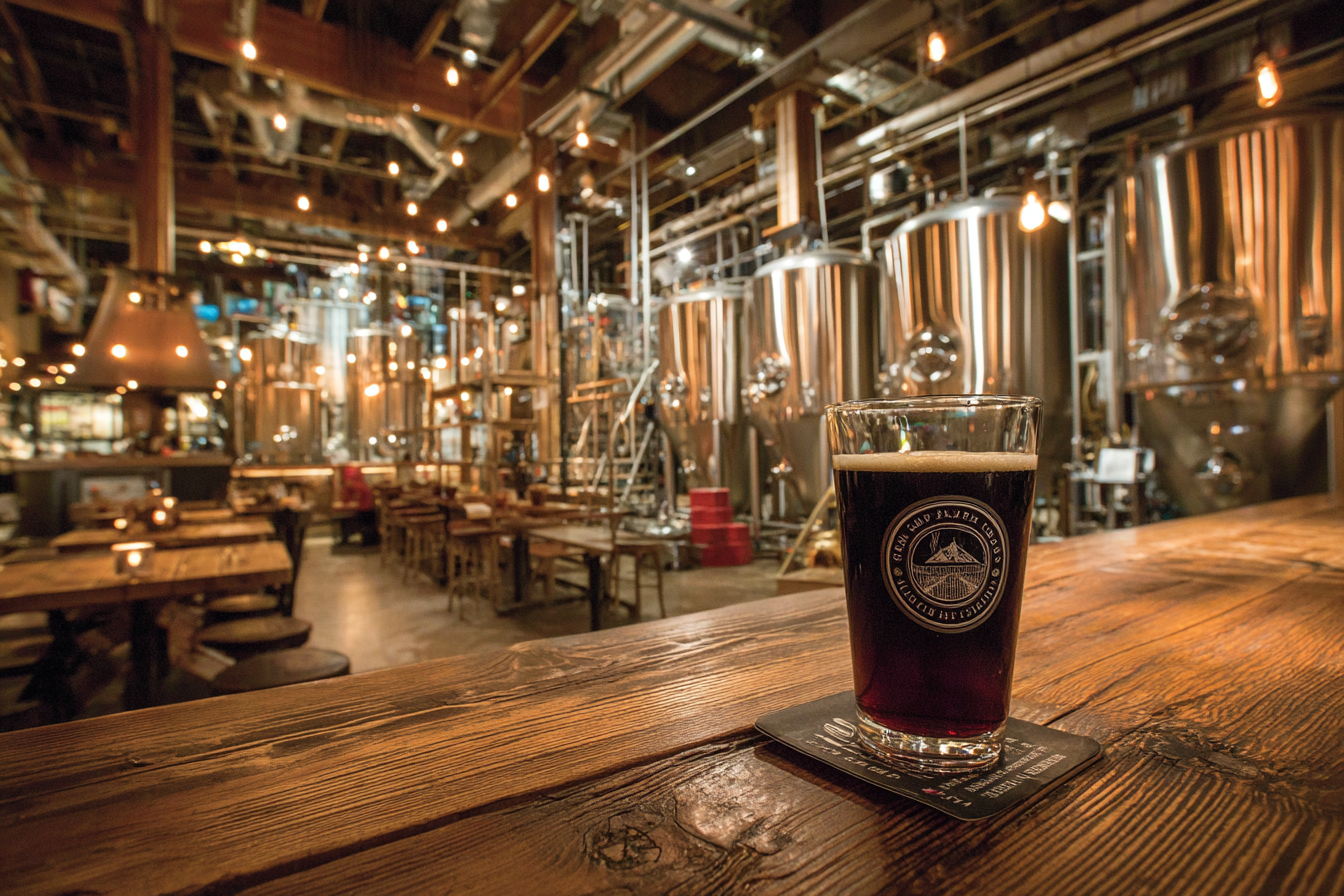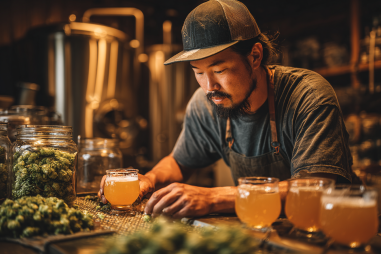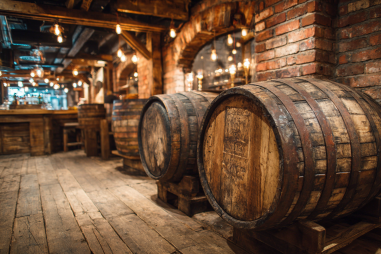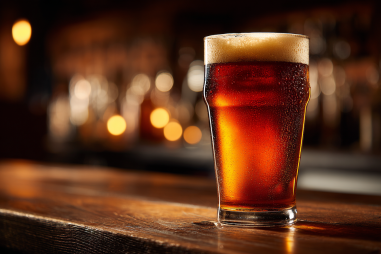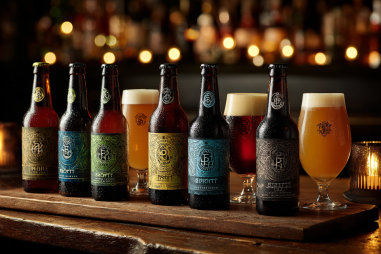American stout is renowned for its bold flavors, robust body, and rich complexity. Whether you’re a homebrewer eager to craft your own batch or a craft beer enthusiast curious about what happens behind the scenes, understanding the American stout brewing process opens the door to appreciating this distinctive style even more. From selecting the right malts and hops to mastering fermentation and conditioning, each step plays a vital role in creating the luscious character that defines this beer. Let’s dive into the detailed brewing journey of an American stout, exploring every stage from grain to glass.
Introduction to American Stout Style
American stout is an evolution of the traditional stout, blending classic dark ale roots with bold American craft brewing innovation. It typically features deep roasted malt flavors, hints of coffee, chocolate, and sometimes smoky or earthy notes, balanced by assertive hop bitterness and aroma. Unlike its Irish stout relatives, American stouts often have higher alcohol content and hop profiles that add complexity and brightness to the otherwise rich and dark beer. This style encourages experimentation, meaning brewers often put their unique spin on it, varying malt bills, hop varieties, and yeast strains to create a truly distinctive brew.
Key Ingredients in American Stout Brewing
The foundation of any great American stout lies in its ingredients. While variations exist, these core components are essential:
- Malts: A blend of base malts like two-row barley combined with specialty malts such as chocolate malt, roasted barley, black patent malt, and caramel malts to achieve complexities of roast, sweetness, and color.
- Hops: American stout uses American hop varieties known for their bold citrus, pine, or resinous qualities, such as Cascade, Centennial, or Chinook, to contribute bitterness and aroma.
- Yeast: Ale yeast strains capable of fermenting well at moderate temperatures, often English or American ale yeasts that complement malt sweetness while allowing hop character to shine.
- Water: The mineral content of brewing water impacts the final flavor, with moderately hard water often preferred for stout production to accentuate malt richness.
Malting and Grain Selection
The journey begins with thoughtful malting and grain selection. Malting involves soaking barley and allowing it to germinate before drying it to develop enzymes needed for converting starches into fermentable sugars. For American stout, brewers typically select base malts like pale malt or two-row malt for a clean malt backbone. From there, specialty grains are chosen with precision:
- Chocolate malt: Adds deep roasted, bittersweet chocolate notes and darkens the beer’s color.
- Roasted barley: Unmalted barley roasted at high temperatures, providing intense roasted flavors and a dry finish.
- Black patent malt: The darkest malt, delivering sharp roasted aromas and pitch-black color.
- Caramel or crystal malt: Adds sweetness, body, and reddish hues, balancing the roasted bitterness.
These grains are carefully proportioned to balance roastiness, sweetness, and mouthfeel specific to the desired flavor profile of the stout.
Mashing and Boiling Steps
Once the grains are selected and milled, they are mashed in hot water to activate enzymes that convert starches into fermentable sugars. The temperature and duration of this mash significantly influence the beer’s body and fermentability. Typically, American stouts are mashed at a moderate temperature range of 150-154°F (65-68°C) to achieve a medium body that supports malt richness without becoming overly sweet.
After mashing, the wort (the sugar-rich liquid) is separated from the spent grains through lautering and then brought to a boil. Boiling sterilizes the wort and allows for hop additions, which contribute bitterness, flavor, and aroma. The boiling process usually lasts 60 to 90 minutes to ensure proper wort concentration, protein coagulation, and hop utilization.
Hop Additions and Their Impact
Hops are integral to defining the character of an American stout. Unlike some traditional stouts that lean more malt-forward, American stouts incorporate assertive hop bitterness and aromatic profiles, striking a balance that makes the beer lively and complex.
Hops are typically added at various stages during the boil:
- Bittering hops: Added at the start of the boil, these hops impart the necessary bitterness to counterbalance the malt sweetness.
- Flavor hops: Added mid-boil to contribute nuanced hop flavors ranging from pine and resin to citrus and spice.
- Aroma hops: Added late in the boil or even during whirlpool to preserve the delicate volatile hop oils that give the beer its distinctive aroma.
Experimenting with different American hop varieties can dramatically affect the final flavor profile, allowing brewers to customize the beer from crisp and hoppy to more subdued and balanced.
Fermentation Techniques Specific to American Stout
Fermentation is where malt sugars transform into alcohol and carbon dioxide, shaping the beer’s flavor and mouthfeel. American stouts are typically fermented using ale yeast strains that work best between 65-72°F (18-22°C). Maintaining temperature control during fermentation is crucial to prevent unwanted off-flavors and to foster the development of desired esters or clean profiles.
Some brewers opt for a slightly higher fermentation temperature to enhance fruity esters and complexity, while others keep it cooler for a smoother finish. Primary fermentation usually lasts one to two weeks, followed by conditioning to mellow the beer’s flavors and allow any harsh notes to soften.
Conditioning and Aging
Once fermentation slows, the beer undergoes conditioning or aging, which can last from a few weeks to several months depending on the brewer’s intent. During this phase, the stout deepens in flavor, the body rounds out, and flavors meld for a more harmonious profile.
American stouts benefit from aging as the roasted malt notes integrate with hop bitterness and subtle yeast character. Some brewers also employ secondary fermentation vessels or age the stout on adjunct ingredients such as vanilla beans, coffee, or cocoa nibs to add layers of complexity.
Proper conditioning temperatures (around 50-60°F or 10-15°C) with minimal oxygen exposure help preserve freshness and avoid oxidation, which can cause stale or cardboard-like off-flavors.
Packaging and Serving Tips
After conditioning, packaging is the final step before the stout reaches drinkers. Bottling or kegging are common methods, with careful attention to minimizing oxygen pickup to maintain flavor integrity. When bottling, priming sugar is added to encourage natural carbonation, usually aiming for a moderate carbonation level that complements the beer’s mouthfeel without overwhelming its creamy texture.
Serving American stout is equally important to bring out the best in the beer. It’s best enjoyed slightly warmer than fridge temperature, around 50-55°F (10-13°C), to allow flavors and aromas to open up. Offering it in a tulip or snifter glass concentrates the aroma and enhances the tasting experience. Because of its full body and bold profile, American stout pairs wonderfully with hearty dishes like grilled meats, rich stews, and chocolate desserts.
Common Challenges and Troubleshooting
Brewing an American stout can be deeply rewarding, but it comes with challenges. Some common issues brewers may encounter include:
- Excessive bitterness: Can result from over-hopping or high pH mash water; adjusting hop quantities or buffering water helps.
- Thin body: Often caused by overly high mash temperatures or insufficient specialty malt percentages; controlled mash temperature and malt adjustments fix this.
- Off-flavors: Such as astringency, sourness, or solvent-like notes may stem from yeast stress, poor sanitation, or high fermentation temperatures; rigorous sanitation and proper yeast handling mitigate these.
- Oxidation: Leads to stale flavors; minimizing oxygen exposure during packaging and storage is critical.
Awareness and careful attention to each brewing stage, especially fermentation and packaging, help avoid these pitfalls and yield a delicious stout.
Perfecting Your American Stout Brew
Mastering the American stout brewing process involves embracing the interplay of malts, hops, yeast, and technique, all tailored to your tastes. The beauty of this style lies in its flexibility—brewers can tweak ingredients and methods to create their perfect stout, whether it’s a hop-forward imperial version or a smooth, roasted session beer.
By understanding each step, from selecting robust malts and assertive hops to managing fermentation and conditioning, you lay the foundation for success. Experiment boldly, savor each small batch, and refine your process to craft an American stout that proudly boasts its bold character and rich complexity. Cheers to brewing your own slice of craft beer excellence!

